
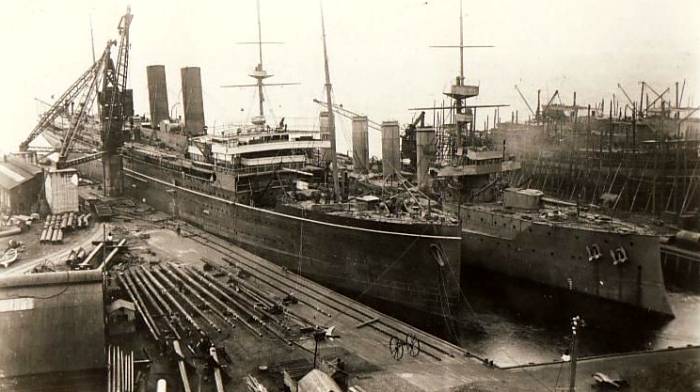
SS Mooltan and the Royal
Navy Cruiser HMS Argyll in build on the River Clyde in 1905.

This web page is dedicated to
the many amazingly brave Australian and New Zealand nurses, who left the
safety of their homeland in order to apply their considerable nursing skills
to caring for the Great War's overwhelming number of wounded. The daughters
of farmers, small business owners, school teachers, ministers of religion
and public servants, theirs is an amazing story of selfless courage and
great dedication.
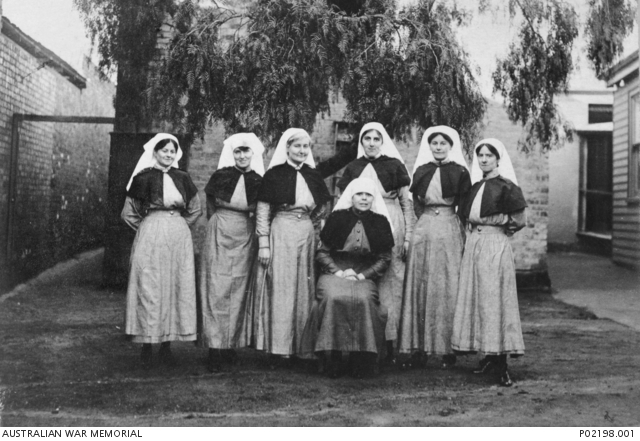
Launceston, Tasmania, 1917.
Group portrait of seven members of the Australian Army Nursing Service (AANS)
in the courtyard of a building. It is possibly shortly before the nurses
sailed on P.& O's ss Mooltan for service in the Middle East and Salonica in
Greece.
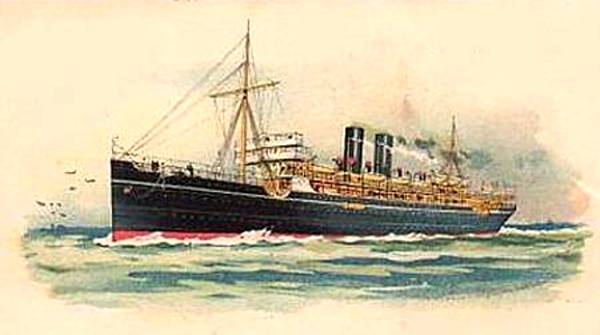
Built by Caird &
Company of Greenock, Yard No 306 and launched on 3rd August 1905, Mooltan was
powered by two steam quadruple expansion steam engines, giving her a service
speed of 17 knots. She had accommodation for 348 1st and 166 2nd class
passengers. Tonnage: 9621 grt | 4828 nrt, Length: 520 feet, Breadth: 58 feet
Completed on 4th October 1905, she made her maiden voyage to Bombay. In 1906 she
transferred to the London - Colombo - Melbourne - Sydney service and in 1911
took part in the Coronation Naval review at Spithead. On 26th July 1915 she was
torpedoed and sunk by the German submarine UC.27 off the coast of Sardinia,
while en route from Malta to Marseilles, in convoy. All 554 passengers and crew
were rescued by escorting Japanese destroyers.
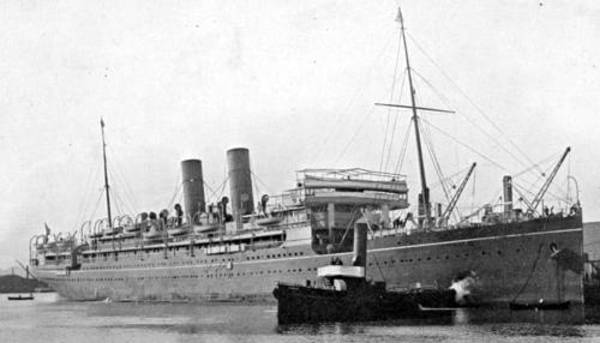
Mooltan,
like many steamships carrying the Royal
Mail, were contracted to carry the mail between Australia
and Britain. On occasion, parts of the ship were booked by the
Australian Imperial Force (AIF)
to carry troops and cargo. The 3rd Australian
General Hospital, AIF, was set up in response to a request from the British War
Office by Thomas Henry Fiaschi, a well-known Italian surgeon. On 15 May 1915,
the new unit sailed from Circular Quay, Sydney, on
board
Mooltan, just one
month after its formation had been requested.
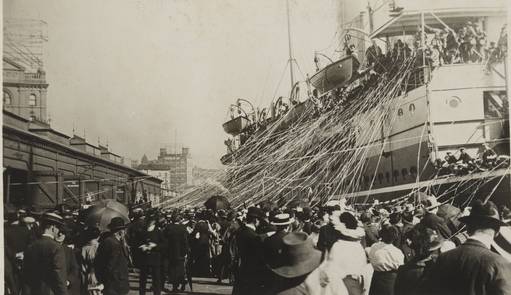
15th May 1915, ss
Mooltan departing Sydney
On board were a
number of Australian Army Nursing Service nurses. As recalled by Sister Anne
Donnell, their uniforms were heavy and the weather on the voyage warm:
"We had another
full dress parade this a.m. and sweltered in our heavy serge dresses, and
wrung the perspiration out of them afterwards. Words fail me while this heat
lasts - honestly we haven't ceased sweating since the third day out from
Australia. A Sergeant-Major died suddenly in the small hours this morning -
owing to the heat."
Anne
Donnell, Letters of an Australian Army Sister, Sydney, 1920,
pp.9-10)
The Mooltan
arrived at Plymouth on 27 June and the unit travelled to London. There,
preparations were made for their service in France at Etaples. However, on 1
July, 3 AGH received orders to proceed to Mudros on the island of Lemnos in
the Aegean Sea near Gallipoli. They were advised that a site had been
selected for the tent hospital and that it would be provided with huts about
six weeks after their arrival in Mudros.
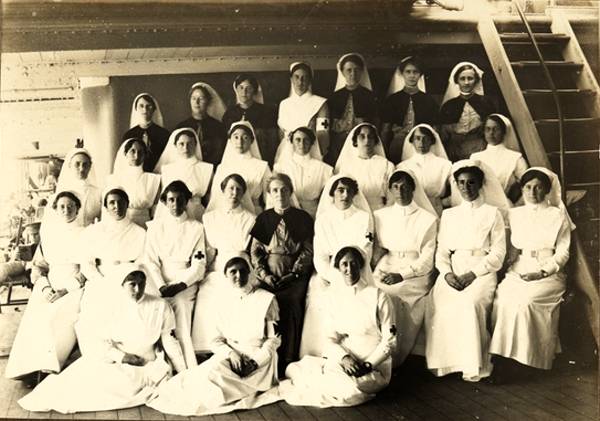
Australian Nursing Sisters on board
Mooltan in 1915
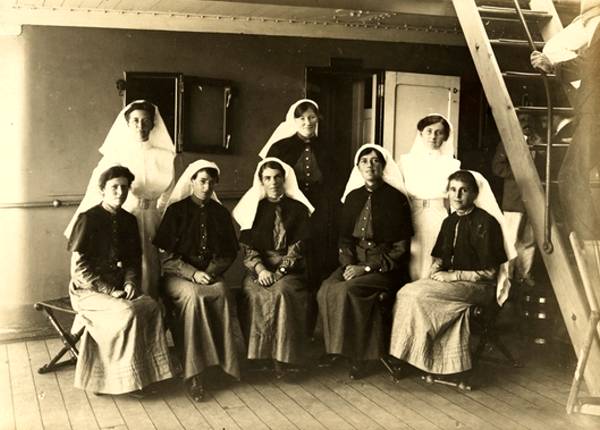
Tasmanian Nursing Sisters on board
Mooltan, 1915
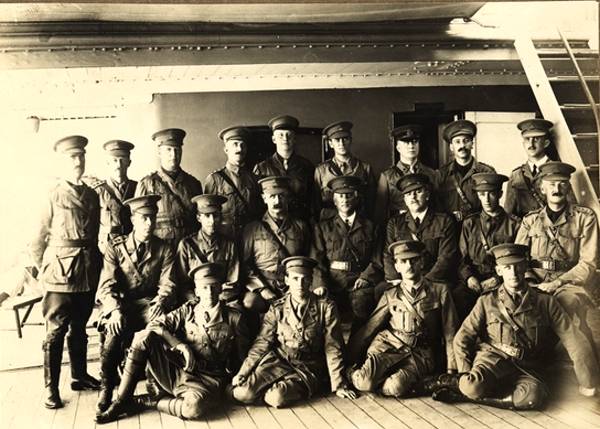
Australian Doctors on board Mooltan,
1915
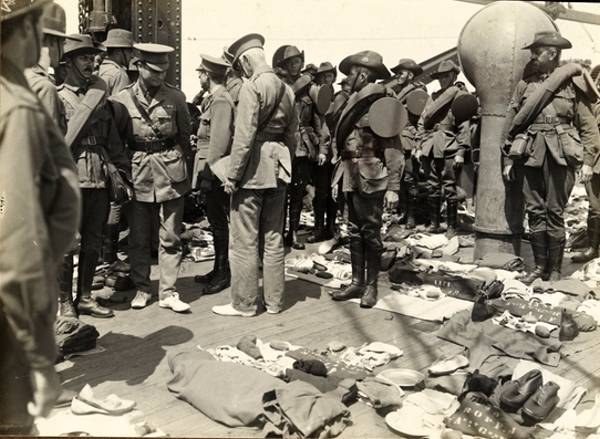
Kit inspection on board Mooltan, 1915
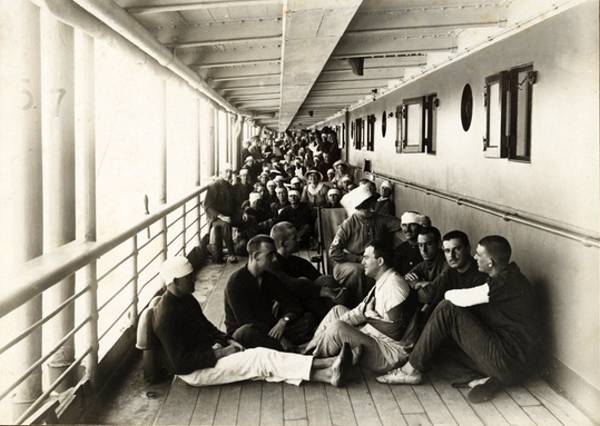
First Aid lectures on board Mooltan,
1915
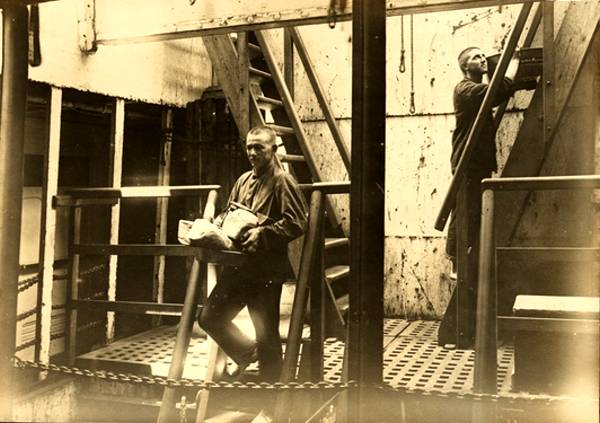
Orderly taking loaves of bread to the
men's mess room on board Mooltan, 1915
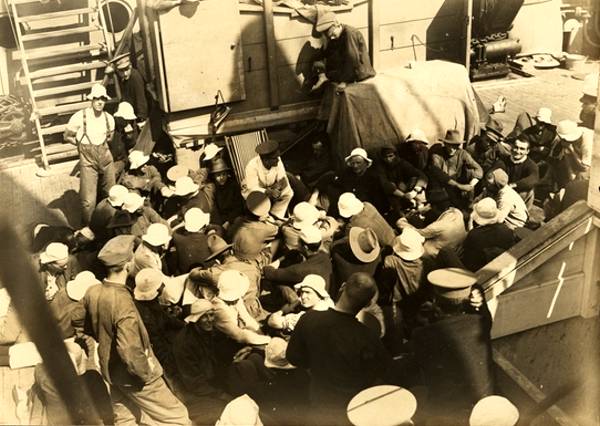
Lecture Classes in mid-ocean, on
board Mooltan, 1915
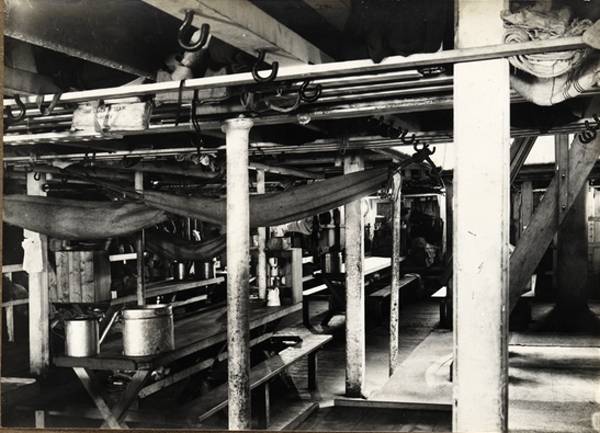
Troops' mess deck accommodation on
board Mooltan, 1915
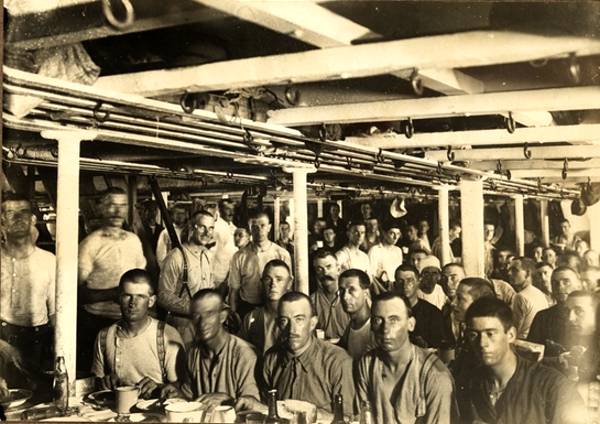
Mealtime on the mess deck on board
Mooltan, 1915
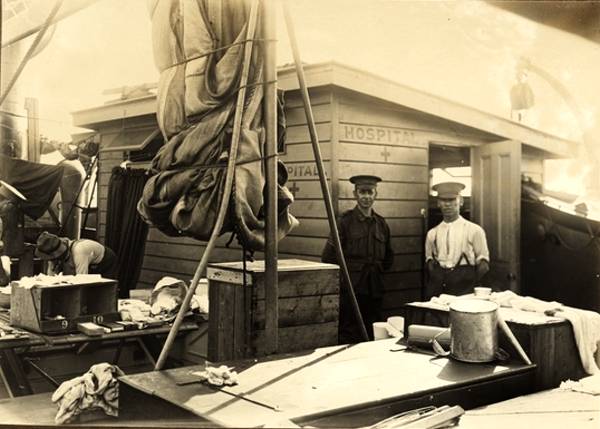
Transportable Field Hospital, fully
assembled on board Mooltan, 1915
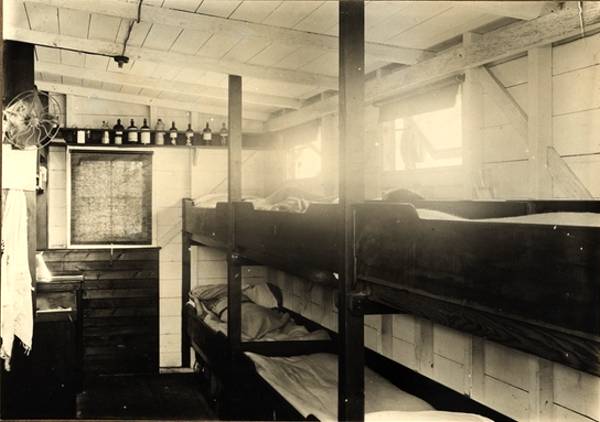
Interior of Transportable Field
Hospital on board Mooltan, 1915
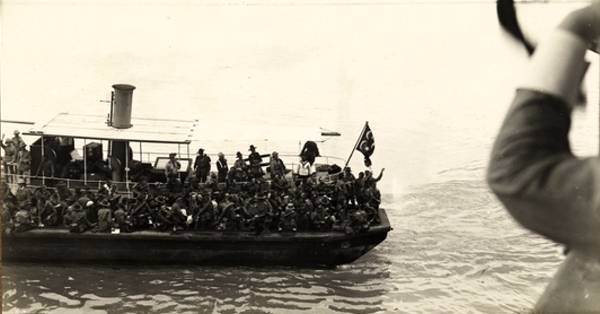
Reinforcements to No:1 Australian
General Hospital leaving Mooltan at Aden, 1915
Source of all the above photos: The State Library of New South
Wales
Because of its position, the island
of Lemnos played an important part in the campaigns against Turkey during the
First World War. It was occupied by a force of marines on 23 February 1915 in
preparation for the military attack on Gallipoli, and Mudros became a
considerable Allied camp. The 1st and 3rd Canadian Stationary Hospitals, the 3rd
Australian General Hospital and other medical units were stationed on both sides
of Mudros bay and a considerable Egyptian Labour Corps detachment was employed.
After the evacuation of Gallipoli, a garrison remained on the island and the 1st
Royal Naval Brigade was on Lemnos, Imbros and Tenedos for the first few months
of 1916.
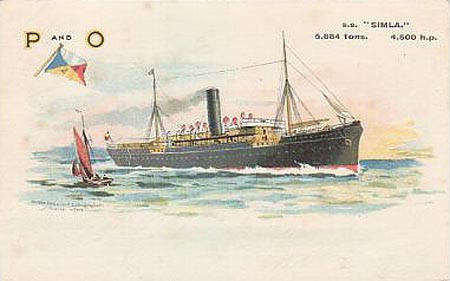
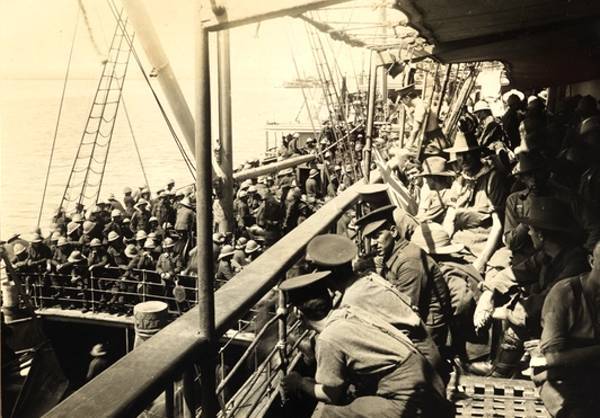
On board ss Simla at Mudros Bay,
Lemnos, Greece - British Troops leaving for Gallipoli.
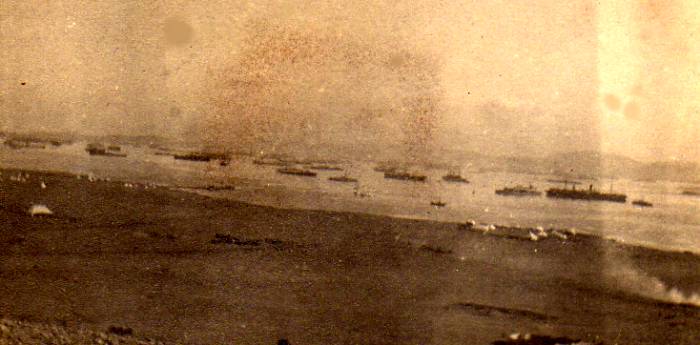
Ships at Mudros Bay, Lemnos, 1915
Mooltan's Passenger
Edith Wilson Yeaman, A Nursing
Sister of The Great War
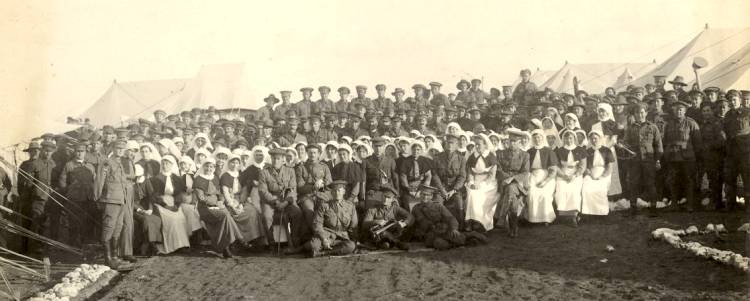
Christmas Day, 1915 - The Staff of 3AGH at Lemnos
Edith Wilson Yeaman,
at the age of 30, enlisted in the Australian Imperial Force in Victoria in May
1915, about three weeks after the landing at Gallipoli. She was a nurse at
Melbourne Hospital and was also a member of the Australian Army Nursing Service,
a reserve that was established in 1900. In the AANS Edith would have attended
lectures, done first aid, paraded and attended field camps. But it didn't
actually prepare the nurses for the harsh conditions in a field hospital. The
organisation and the nurses themselves were thrown in the deep end and they had
to learn 'on the job' how to cope with trench foot, frostbite, shell shock,
mustard gas, dysentery, gangrene, surgical nursing and shrapnel wounds. As well
as nursing in tents, an extreme lack of supplies of food and equipment. And
hospitals run according to strict military routines (when to get up, when to
shave, when to bathe). It seems madness to insist that patients who were able
had to stand to attention at the foot of their beds when the Medical Officer did
his rounds each day! Nurses also had to escort convalescents to Egypt, England
or Australia, they wrote letters home for ill soldiers, they became adept at
scrounging supplies and extras for 'their boys'.
Edith was appointed to 3 A.G.H. (3rd Australian General Hospital), left
Melbourne on P&O's ss Mooltan and arrived in Egypt. A year later her file
records her as returning from a period of recuperation in a British
convalescent home for sick
nurses at Bulkeley, just outside Alexandria.
The unit arrived in England on 27 June 1915, expecting to
be posted to France. However, on 1 July, the commanding officer was informed
that they would instead be deployed to
Mudros, on the Greek
island of Lemnos, where they would nurse the sick and injured troops fighting in
the Gallipoli campaign. Lemnos was only 50 miles from the fighting, whereas the
hospitals in Egypt were over 650 miles away, a journey of 1˝ days. When 3 A.G.H.
first started admitting patients, the majority were wounded men from the August
offensive, and it was these patients the hospital had been set up for, with
operating theatres and surgeons on the staff. In later months, nearly all the
patients were ill with either dysentery or paratyphoid. The staff of the
hospital also fell ill, though the nurses suffered less, probably by practising
better hygiene. in late November and December, the casualties changed again –
troops were caught in freezing weather on the Peninsula without adequate
clothing, and many were admitted to the hospitals on Lemnos suffering from
severe frostbite. The last Australians were evacuated from Gallipoli on the
night of 19/20 December, and many spent Christmas on Lemnos while waiting for
further orders. The whole evacuation of allied troops took three weeks. In spite
of earlier predictions that up to half the remaining forces could be killed, the
evacuations were so well planned that there were minimal casualties, which was a
relief to the hospital staff who had been prepared for casualties. With the end
of the Gallipoli campaign, the hospitals on Lemnos were disbanded. The nurses
boarded the hospital ship Oxfordshire on 14 January, and sailed out of
the harbour at Mudros on 17 January, bound for Egypt.
"We have just seen the last of Lemnos. Of course we are glad, yet there are
many things we will miss; the unconventional freedom and the unique experiences
we had there… Goodbye Lemnos. We take away many happy memories of you. I would
not have liked to miss you, yet I have no desire to see you again." —Sister
Anne Donnell
3 A.G.H. was re-established at Abbassia in Egypt in early 1916 in an old harem,
where it operated for approximately eight months. The staff then operated the
Kitchener War Hospital at Brighton, England from October 1916 before moving to
Abbeville, France, from
May 1917.
On 30 October 1918, the Armistice between the Entente Powers and Turkey was
signed at Mudros.
On 25th
July1917, she left Malta en
route for Marseilles with the Messageries Maritimes steamer Lotus and two
escorting Japanese destroyers, Kusonoki and Ume.
The following
evening she was torpedoed,
forward on the starboard side at 1915hrs by the German
submarine UC27,
endangering Lotus (which had in
fact been UC27’s first target).
All but two of the 554 aboard had been taken off by 2015hrs, when
Mooltan was abandoned,
about100 miles south of
Sardinia, to be sunk two hours later by a second torpedo.
On 28th July1917,
her passengers and
crew were landed at Marseilles
"Mooltan, a steamer of 9,621 grt was torpedoed and sunk on July 26, 1917 by the German submarine UC
27 53 miles NNW1/2W Cape Serrat 37°56'N, 08°34'E while on a voyage from
Sydney, NSW and Freemantle for London with general cargo, mails, and
meat. Two lives lost. The Mooltan was being escorted at the time by two Japanese
destroyers, the Kusonoki and the Ume, and all but two of those on board the ship
were rescued by these escorting ships.
The Kusonoki & Ume then engaged the German submarine, but were unsuccessful in
their attempts to sink her, and had to disengage because they were leaving the
second ship they were escorting (the Lotus) in a vulnerable position.
Information was received privately on
Monday that the P. and O. Company's
R.M.S. Mooltan, 9,505 tons, which left
Melbourne for London on June 12, had
been lost in the Mediterranean.
The first official information of what
had happened was received in a cable
message from London:
"Postmaster General reports
mail leaving Adelaide on June 14 sunk
by enemy action." During the afternoon a statement was made available
from the Navy Office, and great relief
was experienced when it became known
that the passengers had been saved.
A 'Mishap'
Australian Mail Lost
- Caused by Enemy Action
London, July 30.
Mr. A. H. Illingworth, the Postmaster
General, announces that the Australian mail, which left Adelaide on June
14th has been lost owing to enemy action.
"The mails carried by the Mooltan
were those which closed in Melbourne
on June 13. The bulk was about normal. In addition to the mail matter
for civilian addressees, the vessel had
on board the Expeditionary Forces
mails for Mesopotamia, Egypt, Salonika
and France. All of these, except those
for Franco, would have been put ashore
at Port Said. If the mishap to the
steamer had occurred after she had called at Marseilles the mails for Franco
would have also been landed, and thus
the whole of the letter portion of the
mail would have been saved. It is probable, however, that the parcels and
newspapers had been taken on to be
landed in England by the steamer, so
that news of their loss will not come
unexpectedly when further details are
available.
Though the manifests of the vessel's
cargo were not available tonight, it is
understood that she carried a considerable quantity of chilled beef, a consignment of some 2,000 bales or wool, and
about 3,000 bags of wheat, the complement usually taken by P. and 0. mail
steamers in addition to general merchandise.
In connection with the loss of the
Mooltan, the Minister of Defence- Senator Pearce
- made the following statement to-day:-
The 273 nurses who left
Australia in June last for war service
at Salonika have arrived safely, and
have been disembarked at Egypt.
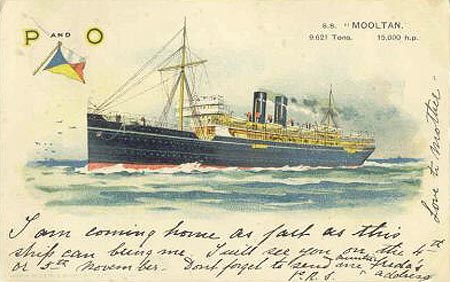
At 7.15pm on the
26th July, when 100 miles south of Sardinia, a torpedo was sighted
700 or 800 yards away on the starboard beam, proceeding towards the Mooltan at a high speed. The submarine was not visible. The alarm
was sounded on the steam-whistle, and the ship swung rapidly to her
helm, which had been at once put hard a-starboard. The torpedo
overtook the ship, and struck a glancing blow about 35 feet abaft
the stem on the starboard side, and 15 feet below the water line.
The explosion threw up a large column of green flame, which sheared
the rivet heads of the outside plates of the bow, a huge hole was
made in the hold, and decks in the vicinity were burst upwards.
Wireless signals were sent out, the engines reversed, and the vessel
brought to a standstill. Boats were then lowered, containing all
passengers, and part of the crew. Certain officers, engineers and
hands remaining, as usual, on board with the Commander. The only
casualty was one of the Goanese seamen who was killed by the
explosion. One of the destroyers circled round the Mooltan, throwing
off volumes of smoke, and the
other endeavoured to attack the submarine. On inspection, it was
found that the forward part of the ship was full of water, and she
appeared to be settling by the head. There was no hope of the
Mooltan keeping long afloat, and the Commander of the convoy hoisted
signals to abandon ship as soon as possible. The Mooltan’s Commander
and his officers and engineers left the ship, and the last two boats
reached the destroyers at 8.15pm, in which were the whole of the
people removed from the Mooltan. The Lotus had proceeded at full
speed, and the destroyers hurried to join her. As soon as the moon
had set the escorts were brought alongside each other, and, in the
darkness, 70 of the Mooltan’s crew transferred, to equalise the
numbers in each vessel.
The next day the ships were passing through
a dangerous area, and the bright moonlight night
following did not much abate the anxiety. The convoy reached
Marseilles on the 28th July at 1am, and the P&O Agents took charge
of the passengers and crew when they landed at 3am. Passengers were
cared for at the various hotels at the Company’s expense. They left
the port 12 hours after arrival, and arrived in London the following
day. The warmest praise was expressed for the attention and kindness
shown by the officers and crews of the destroyers, who did everything
possible for the comfort of all from their scanty stores and
appliances......

























